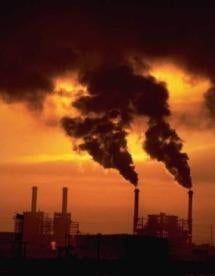The U.S. Court of Appeals for the District of Columbia Circuit issued a per curiam opinion on Tuesday morning upholding greenhouse gas-related rules promulgated by the Environmental Protection Agency (EPA) after the U.S. Supreme Court's decision in Massachusetts v. EPA, 549 U.S. 497 (2007). The opinion, Coalition For Responsible Regulation, Inc., et al. v. EPA, No. 09-1322 (June 26, 2012), consolidates four separate cases brought by States and regulated industries petitioning for review of EPA's greenhouse gas regulations. The petitioners claimed that EPA misconstrued the Clean Air Act and acted arbitrarily and capriciously.
The D.C. Circuit denied or dismissed all of the petitioners' claims, but only addressed the merits of the arguments against the Endangerment Finding and the Tailpipe Rule. The Supreme Court in Massachusetts v. EPA had previously required EPA to make a finding about the health or welfare dangers caused by greenhouse gases, and the Court held that the EPA's subsequent Endangerment Finding was based on an adequate review of literature and therefore was not arbitrary and capricious. The court next addressed EPA's emission standards for cars and light trucks (the Tailpipe Rule). The Court reasoned that upon making the Endangerment Finding, under Section 202 of the Clean Air Act (CAA), EPA had no discretion in whether to regulate tailpipe emissions. Neither the fact that tailpipe emissions represent a small percentage of the overall greenhouse gases emitted in the country nor the fact that the U.S. Department of Transportation has the ability to regulate fuel standards relieves EPA of its mandatory duty to regulate tailpipe emissions.
The court did not reach the merits of the petitioners' arguments with regard to EPA's Timing and Tailoring Rules, holding that the petitioners lacked standing to challenge the rules. The Tailoring Rule modified the CAA's statutory definition of "major source," dramatically increasing the quantity of emissions necessary for a source to be subject to construction and operating permitting authorities under the CAA. The Timing Rule lengthened the compliance date before the CAA's permitting rules would take effect. EPA justified both rules because they would alleviate the burden on permitting authorities and the regulated community.
- The court found that the industry petitioners' alleged injury — the fact that they, as owners of regulated sources, now carry a heavier administrative burden — was not caused by either the Timing or the Tailoring Rules, and that, to the contrary, the rules serve to mitigate the petitioners' purported injuries.
- The court was also unconvinced by the State petitioners' argument that the chaos that would have ensued in the absence of the Tailoring Rule would have "forced" Congress to enact "corrective legislation" which would have, in turn, mitigated the increased administrative burden of the new regulations. The court disagreed with the proposition that it can ever be said to be likely (for standing purposes) that Congress will enact any type legislation.
- The State petitioners' second argument — that the petitioning States were, like the Commonwealth of Massachusetts in Massachusetts v. EPA, injured by the fact that EPA did not regulate greenhouse gases sooner — might have fared better if the petitioners had properly raised that argument in their opening brief and had not failed to cite any record evidence that the State petitioners are adversely affected by global climate change.
- As to the Timing Rule, given that the Timing Rule only served to delay the applicability of permitting requirements to major sources until the Tailpipe Rule took effect on January 2, 2011, the court expressed confusion as to whether vacating the Timing Rule would have any practical effect, thus suggesting that it is unlikely that any one would be able to establish the "redressability" element of the Article III standing requirements which a petitioner would need to overcome in order to successfully challenge the Timing Rule.
While this opinion lets EPA's greenhouse gas-related rules stand in their entirety, the petitioners will likely seek review of the D.C. Circuit's decision by the U.S. Supreme Court.


 i
i


